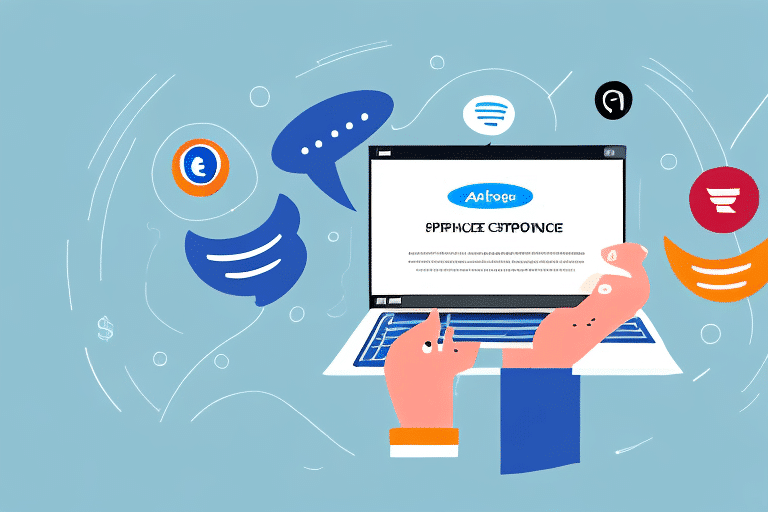The Rise of Chatbots in Customer Service: Embracing Opportunities to Improve Your Business
In recent years, chatbots have become increasingly prevalent in the customer service industry, and for good reason. These intelligent computer programs are capable of answering customer inquiries, resolving issues, and even processing transactions, all without the need for human intervention. According to a McKinsey report, businesses that implement chatbots can achieve up to a 30% reduction in customer service costs. Their efficiency and effectiveness have led many businesses to explore the possibilities of incorporating chatbots into their customer service strategies. In this article, we will explore the power of chatbots, from their basic functions and types, to their benefits and future trends. We will also share tips and best practices for designing and developing your own chatbot.
The Power of Chatbots in Business
The key to success in the business world lies in the ability to embrace change and take advantage of opportunities when they arise. Chatbots represent a significant opportunity for businesses of all sizes to improve customer experience and streamline their operations. By adopting this technology, businesses can stay ahead of the competition and meet the demands of today's digitally-savvy consumers.
Enhancing Operational Efficiency
By implementing chatbots, businesses can significantly reduce response times, improve customer satisfaction, and increase operational efficiency. Automated replies and transactions can be processed instantly, freeing up human agents to handle more complex issues. This reduction in workload can boost employee morale and job satisfaction, leading to a more positive work environment and improved overall productivity.
Improving Customer Experience
In addition to operational benefits, chatbots can enhance the customer experience in various ways. By providing 24/7 support and instant responses, chatbots increase customer convenience and reduce frustration. They can also offer personalized experiences by utilizing customer data to provide tailored recommendations and promotions. Moreover, chatbots facilitate engagement and interaction, fostering increased loyalty and repeat business.
Addressing Potential Risks
While chatbots offer numerous benefits, there are potential risks that businesses should consider. One primary concern is the possibility of chatbots malfunctioning or providing inaccurate information, which can harm a business's reputation and lead to customer dissatisfaction. Additionally, some customers may prefer human interaction and feel frustrated or alienated by interacting with chatbots. To mitigate these risks, businesses should implement robust testing procedures and ensure seamless escalation to human agents when necessary.
The Evolving Role of Chatbots in Business
As technology continues to advance, chatbots are expected to become even more sophisticated and integrated into various aspects of business operations. Beyond customer service, chatbots may be utilized for tasks such as sales, marketing, and data analysis. Businesses that embrace this technology and stay ahead of trends are likely to benefit from increased efficiency, enhanced customer experiences, and a competitive edge in the marketplace.
Chatbots 101: A Beginner's Guide
For those new to the world of chatbots, navigating the different types and functions can seem overwhelming. However, understanding the basics of chatbots is essential for incorporating them effectively into customer service strategies.
Understanding the Basics of Chatbots
Chatbots are computer programs designed to simulate human conversations and interactions. They can be built to respond to a wide range of queries and can be programmed with specific objectives in mind. Chatbots operate through various platforms, including messaging apps, websites, social media, and voice assistants.
Types of Chatbots and Their Applications
There are two primary types of chatbots: rule-based and AI-based. Rule-based chatbots respond to specific commands or keywords and follow predefined scripts. In contrast, AI-based chatbots utilize machine learning algorithms to understand natural language and provide more personalized responses. Both types have distinct advantages and limitations, and selecting the appropriate type depends on a business's specific needs and goals.
Benefits of Implementing Chatbots
- 24/7 Customer Support: Unlike human agents, chatbots can operate around the clock, providing customers with immediate assistance at any time.
- Scalability: As businesses grow, chatbots can handle an increasing volume of customer inquiries without the need to hire additional staff, resulting in cost savings.
- Consistency: Chatbots deliver consistent responses, ensuring that all customers receive the same level of service.
The Future of Chatbots: Trends and Predictions
As chatbot technology continues to evolve, the potential applications and capabilities of chatbots are expanding. Here, we explore some of the most exciting trends and predictions for the future of chatbots.
Advancements in Natural Language Processing
With ongoing improvements in natural language processing (NLP), chatbots are becoming increasingly adept at understanding and interpreting human language nuances. This advancement enables chatbots to engage in more meaningful and context-aware conversations, enhancing the overall user experience.
Integration with Emerging Technologies
Chatbots are expected to integrate with other emerging technologies such as artificial intelligence (AI), machine learning, and the Internet of Things (IoT). This integration will allow chatbots to perform more complex tasks, provide deeper insights, and offer more personalized interactions.
Expansion into Healthcare and Education
Chatbots are making significant inroads into industries like healthcare and education. In healthcare, chatbots can provide personalized medical advice, monitor symptoms, and remind patients to take their medication. In education, chatbots can offer personalized learning experiences, answer student queries, and assist with administrative tasks.
Enhanced Emotional Intelligence
Future chatbots are likely to possess enhanced emotional intelligence, enabling them to detect and respond to customer emotions. This capability will lead to more empathetic and human-like interactions, improving customer satisfaction and loyalty.
Building Your Own Chatbot: Tips and Best Practices
If you're considering incorporating chatbots into your business, here are some tips and best practices to guide you through the process.
Choosing the Right Platform
There are numerous platforms available for building and deploying chatbots, including Facebook Messenger, WhatsApp, and Slack. The choice of platform should align with your target audience and the specific goals of your chatbot.
Designing for User Experience
When designing your chatbot, prioritize the user experience. Ensure that your chatbot is intuitive, provides clear instructions, and offers personalized responses. Incorporate conversational design principles to make interactions natural and engaging. Additionally, conduct thorough testing to identify and address any performance issues before deployment.
Incorporating AI and Machine Learning
Integrating AI and machine learning into your chatbot can significantly enhance its ability to understand and respond to user queries effectively. AI-powered chatbots can learn from user interactions, improving their responses over time. However, it's crucial to train your chatbot on relevant and unbiased data and continuously monitor its performance to prevent errors or unintended biases.
Ensuring Data Security and Privacy
With the increasing use of chatbots, ensuring data security and privacy is paramount. Implement robust security measures to protect customer data and comply with relevant regulations such as the GDPR. Transparent communication about data usage can also build trust with your customers.
Chatbots in Action: Real-Life Examples
To understand the real-life impact of chatbots, let’s examine how they are being utilized across different industries.
Healthcare: Enhancing Patient Care
In the healthcare sector, chatbots are revolutionizing patient care by providing instant responses to medical inquiries, scheduling appointments, and offering information about medical conditions and treatments. For example, IBM Watson Health utilizes chatbots to assist patients in managing their health and accessing medical resources efficiently.
E-Commerce: Personalizing the Shopping Experience
In the e-commerce industry, chatbots enhance the shopping experience by offering personalized product recommendations, managing order tracking, and handling returns. Platforms like Shopify integrate chatbots to provide instant customer support, thereby increasing customer satisfaction and loyalty.
Education: Supporting Learning and Administration
In education, chatbots are employed to assist students with personalized learning experiences, answer academic queries, and provide feedback on assignments. Additionally, chatbots help educators manage administrative tasks such as grading and attendance tracking, allowing them to focus more on teaching.
The Ethics of Chatbots: Balancing Automation and Human Interaction
As with any technology, the use of chatbots raises ethical considerations regarding the balance between automation and human interaction.
Ensuring Ethical and Transparent Interactions
Businesses must ensure that their chatbots operate ethically and transparently. This involves clearly informing users when they are interacting with a chatbot and providing easy access to human support when needed. Additionally, it's essential to monitor chatbot interactions to prevent discriminatory or biased responses.
Protecting Customer Data
With chatbots handling sensitive customer information, safeguarding data privacy is crucial. Implementing strong encryption methods and adhering to data protection regulations helps maintain customer trust and compliance with legal standards.
Maintaining Human Touch
While chatbots can handle a wide range of tasks, maintaining a human touch is vital for complex or sensitive interactions. Ensuring a seamless handoff to human agents when necessary can enhance customer satisfaction and address issues that require personalized attention.
Addressing Employment Concerns
The integration of chatbots in customer service roles may lead to concerns about job displacement. Businesses should consider the impact on their employees and provide training and support to help them transition to more strategic roles that complement chatbot capabilities.
Overall, the rise of chatbots represents a significant opportunity for businesses to improve customer experience and streamline operations. By embracing this technology and following best practices for design and development, businesses can stay ahead of the curve and meet the demands of today's digitally-savvy consumers.
However, it is also essential to address ethical considerations and potential impacts on employment to ensure a balanced and responsible implementation of chatbot technology.






















